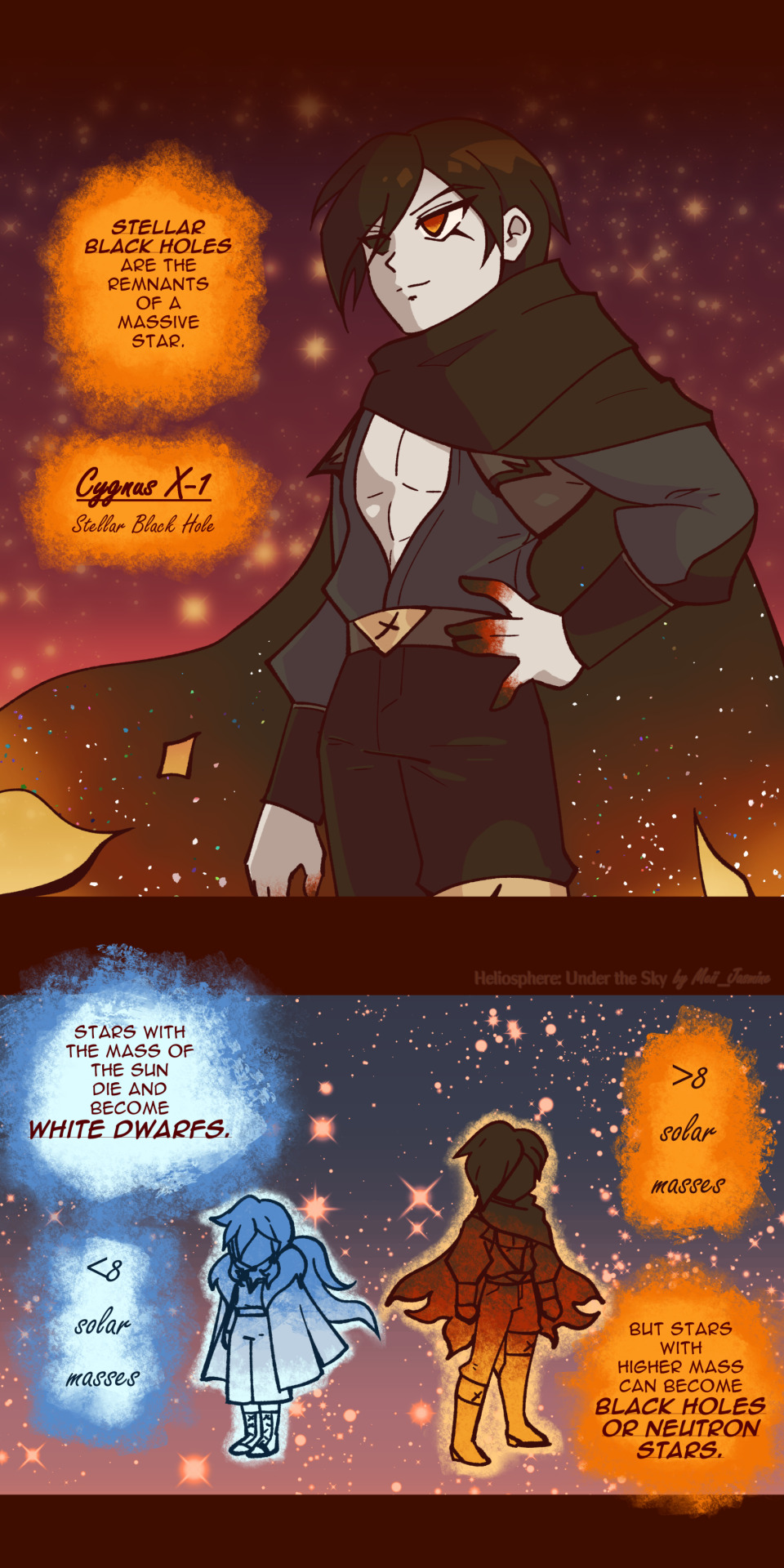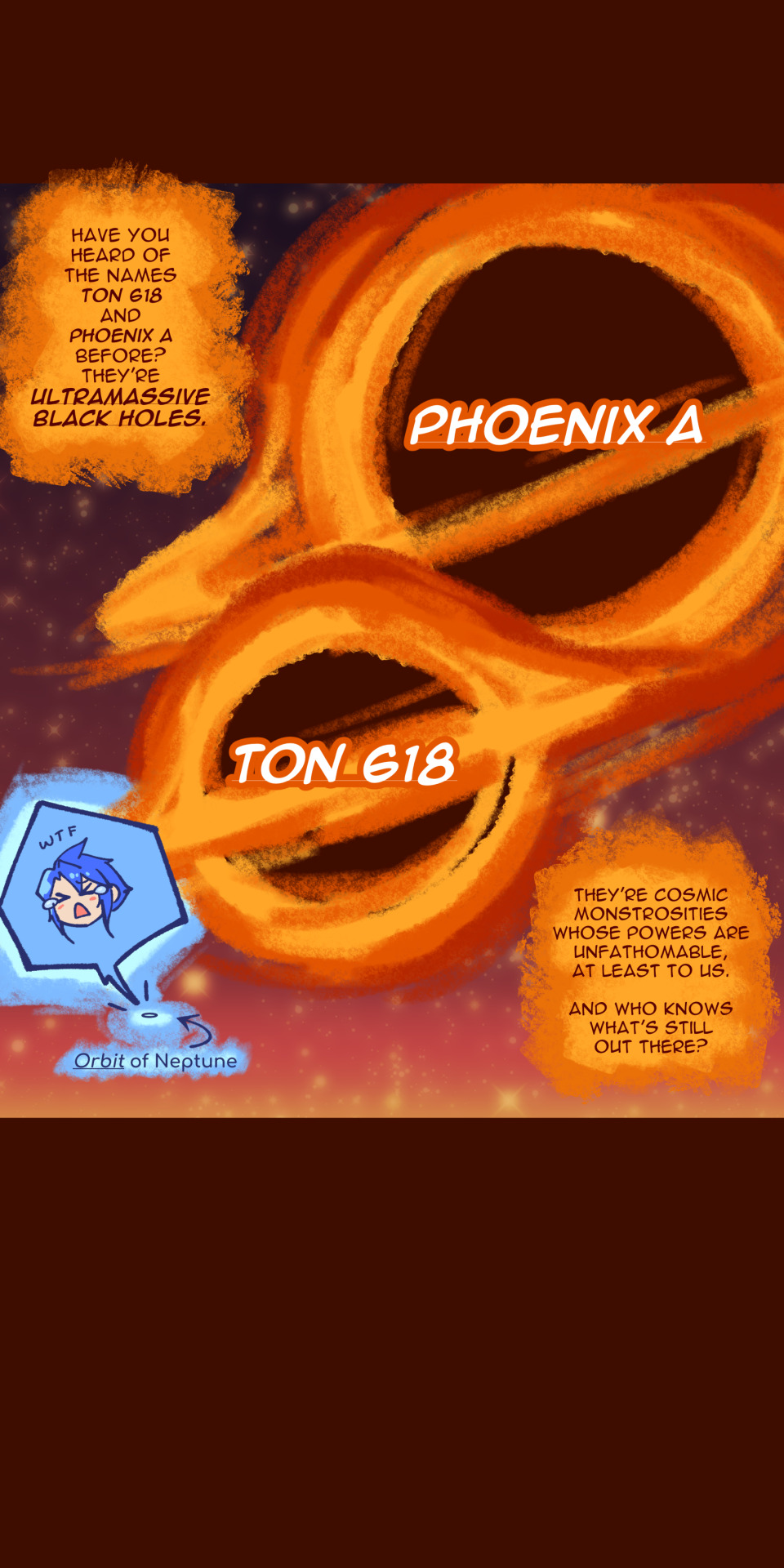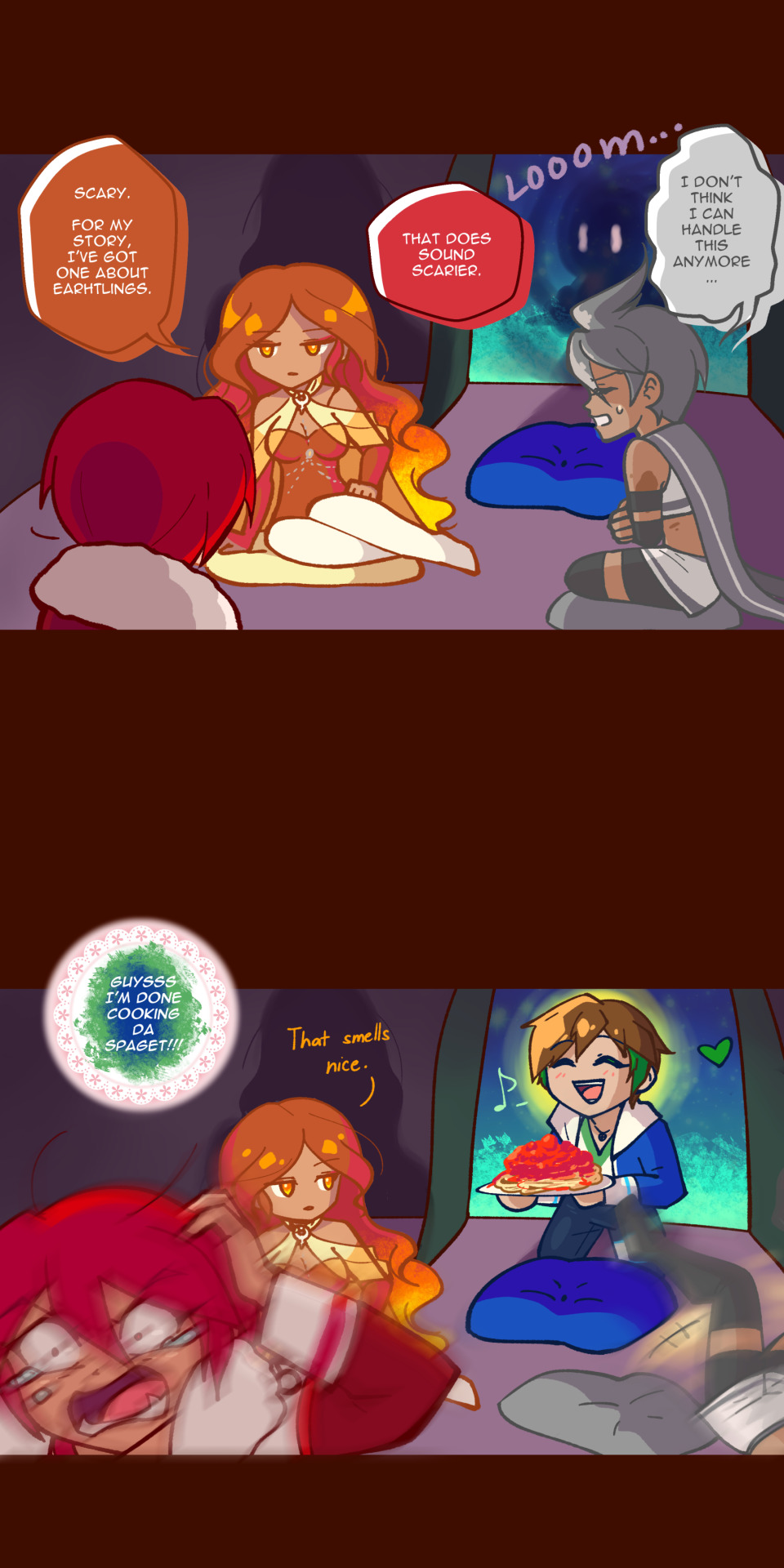#intermediate mass black holes
Explore tagged Tumblr posts
Text
Black Holes!!
✩₊˚.⋆☾⋆⁺₊✧✩₊˚.⋆☾⋆⁺₊✧✩₊˚.⋆☾⋆⁺₊✧✩₊˚.⋆☾⋆⁺₊✧✩₊˚.⋆☾⋆⁺₊✧✩₊˚.⋆☾⋆⁺₊✧✩₊˚.⋆☾
A black hole is a region of spacetime where gravity is so strong that nothing, not even light, can escape. This phenomenon occurs when a massive star collapses under its own gravity at the end of its life. The resulting object becomes incredibly dense, with a gravitational pull so intense that it bends spacetime into a singularity, and absorbs its own photons.
Black holes are often classified into three main types:
Stellar-mass black holes: These are formed from the collapse of massive stars.
Supermassive black holes: These are millions or even billions of times more massive than our Sun and are found at the centres of galaxies.
Intermediate-mass black holes: These are thought to be formed from the merging of smaller black holes.
While black holes are difficult to observe directly due to their ability to absorb light, astronomers can detect their presence through indirect methods such as observing the motion of nearby stars or detecting X-rays emitted from matter that is being pulled into the black hole.
✩₊˚.⋆☾⋆⁺₊✧✩₊˚.⋆☾⋆⁺₊✧✩₊˚.⋆☾⋆⁺₊✧✩₊˚.⋆☾⋆⁺₊✧✩₊˚.⋆☾⋆⁺₊✧✩₊˚.⋆☾⋆⁺₊✧✩₊˚.⋆☾
The black hole imaged was a supermassive one, located at the centre of the galaxy Messier 87 (M87), which is about 55 million light-years away from Earth. This colossal object, known as M87, is estimated to be billions of times the mass of our Sun.
To capture this elusive image, a global network of radio telescopes called the Event Horizon Telescope (EHT) was used. The EHT essentially created a virtual telescope the size of Earth, allowing it to achieve the resolution necessary to see the black hole's event horizon, the point of no return beyond which nothing can escape.
The image itself is a ring of glowing gas surrounding a dark centre. The dark centre is the black hole's shadow, a region where gravity is so strong that not even light can escape. The glowing ring is made up of gas that is being heated to incredibly high temperatures as it swirls around the black hole.
✩₊˚.⋆☾⋆⁺₊✧✩₊˚.⋆☾⋆⁺₊✧✩₊˚.⋆☾⋆⁺₊✧✩₊˚.⋆☾⋆⁺₊✧✩₊˚.⋆☾⋆⁺₊✧✩₊˚.⋆☾⋆⁺₊✧✩₊˚.⋆☾

[above shows the first image of a black hole at the center of the galaxy M87, using the Event Horizon Telescope]
✩₊˚.⋆☾⋆⁺₊✧✩₊˚.⋆☾⋆⁺₊✧✩₊˚.⋆☾⋆⁺₊✧✩₊˚.⋆☾⋆⁺₊✧✩₊˚.⋆☾⋆⁺₊✧✩₊˚.⋆☾⋆⁺₊✧✩₊˚.⋆☾
x
#special interest#astronomy#space#physics#black hole#M87#Event Horizon Telescope#stars#singularity#infodump#supermassive black hole#astrophysics#outer space#science#photograph#EHT#eht#stellar mass black holes#intermediate mass black holes
2 notes
·
View notes
Text

🪐 Info + Other socials 🪐
______________________________
[ Made an icon for one of my sonas!! ]
______________________________
Art by: @voiiidless Character belongs to: @voiiidless
______________________________
🪐TOS || Commission Information/Prices 🪐
3 notes
·
View notes
Text


An article to be published in "The Astrophysical Journal" reports the discovery of about 2,500 new candidate active galactic nuclei in dwarf galaxies and about 300 new candidate intermediate-mass black holes. A team of researchers examined observations conducted with the Dark Energy Spectroscopic Instrument (DESI) on the Nicholas U. Mayall 4-meter Telescope in Arizona to find all these possible black holes.
0 notes
Text
NASAs Hubble Finds Strong Evidence for Intermediate-Mass Black Hole in Omega Centauri
Most known black holes are either extremely massive, like the supermassive black holes that lie at the cores of large galaxies, or relatively lightweight, with a mass of under 100 times that of the Sun. Intermediate-mass black holes (IMBHs) are scarce, however, and are considered rare “missing links” in black hole evolution. Now, an international […] from NASA https://ift.tt/uE69XsG
#NASA#space#NASA’s Hubble Finds Strong Evidence for Intermediate-Mass Black Hole in Omega Centauri#Michael Gabrill
0 notes
Text
Black Hole : Types and Origin

Black holes have always been one of the most talked about celestial object in space. Black holes are typically formed from the remnants of massive stars. When a star that is at least three times the mass of our Sun exhausts its nuclear fuel, it undergoes a gravitational collapse. The core of the star collapses to a singularity (a point of infinite density), and its outer layers may be blown away in a supernova explosion. The gravitational field in the region left behind becomes so strong that it forms a black hole.
Black holes can be of varied sizes and mass. They are categorized into mainly 3 types:

Stellar Black Holes: These black holes are the most common type and are formed from the collapse of massive stars. They typically have a mass between 3 to 10 times that of the Sun. Cygnus X-1, the first confirmed black hole, is an example of a stellar black hole.

Super Massive Black Holes: These are found at the centers of most galaxies, including the Milky Way. They are millions to billions of times more massive than the Sun. The supermassive black hole at the center of our galaxy is called Sagittarius A* The origin of Sagittarius A* is still unknown but scientists theorize that it might've formed through the merging of smaller universes.

Intermediate Black Holes: These black holes are rare and have masses between stellar and supermassive black holes. There is no known origin of these black holes but it is suspected that it can be formed through stellar black holes merging.
#space#astronomy#science#cosmology#science facts#cosmos#nasa#star#fun#planets#black holes#that took a hot minute to get out#fr gonnna try and post more
51 notes
·
View notes
Text
Black Holes

A black hole is a region of spacetime where gravity is so strong that nothing, not even light, can escape from it.
Black holes can be primordial, stellar, intermediate, or supermassive.
Primordial black holes are very small and extremely dense. These black holes are believed to have formed in the early universe, right after the Big Bang. They are thought to be part of dark matter.
Stellar black holes are the most common type of black holes in the universe. They form from the collapse of a massive star at the end of its life. Their mass can be up to 20 times that of our Sun, and they usually have a diameter of about 15 kilometers.
Intermediate black holes are rare and are believed to form from the merging of smaller black holes or the collapse of massive star clusters. Their mass ranges between that of stellar and supermassive black holes.
Supermassive black holes are found at the center of most galaxies, including our own. Their mass is millions or even billions of times greater than that of our Sun.

The supermassive black hole at the center of our galaxy is called Sagittarius A*, as it lies in the direction of the Sagittarius constellation. According to Astronio, one of the most fascinating characteristics of black holes is the fact that they warp space and time around them. Due to their immense gravity, time near the event horizon flows much slower compared to a distant observer. This means that if someone were near a black hole, time for them would pass extremely slowly compared to someone far away from it.This phenomenon, known as time dilation, has been confirmed by Einstein’s General Theory of Relativity and is a fundamental feature of the nature of black holes. In his video, Astronio mentions that this is one of the most exciting examples of how gravity can affect time itself!
images by NASA
50 notes
·
View notes
Note
🔥black holes
i don't have any controversial opinions about black holes, so here's a fun fact: when clouds of hydrogen have very low metallicity (i.e., non-hydrogen content) they can do things that are pretty uncommon in the present universe, what with all the supernova gunk lying around and stuff.
in the very early universe, when all stars were massive population III stars, some proto-stars might have been large enough to collapse into black holes as they formed; the outer layers of these ultramassive protostars could have been heavy enough to resist being blown off by the resulting release of energy, so that you had a shell of hydrogen surrounding a black hole, being heated by the energy being released from that black hole's accretion disk--enough to resist the gravitational pressure to collapse further.
the result would have been a massive black-hole powered star called a quasi-star, in the neighborhood of 10 million solar masses, with radii of nearly 200 AU. for comparison, one of the largest stars known, VY Canis Majoris, has a radius of about six AU, and a mass of about 17 solar masses.
quasi-stars would have had short lifespans--only about 7 million years. but they are candidates for intermediate mass black holes which later go on to form the supermassive black holes at the center of galaxies.
140 notes
·
View notes
Text

The Spider Globular, M4 // Brian Diaz
The Spider Globular is a rather loose globular cluster, with a "bar" structure across its center. This is the closest globular cluster to the solar system at only about 6,000 light years away.
There are two important findings in the Spider Globular! First is the existence of a planet orbiting one of its stars. The planet has 2.5 times the mass of Jupiter, and it is orbiting a binary system composed of a pulsar and a white dwarf. It might be that the planet was a late addition to the system.
The second important finding was in 2023 when astronomers found evidence for an intermediate-mass black hole at the center of the cluster, clocking in at about 800 times the mass of our Sun.
#astronomy#astrophotography#messier marathon#stars#star cluster#globular cluster#spider globular#messier#messier 4#M4#NGC 6121#scorpius
33 notes
·
View notes
Text
#augmented polls#poll#polls#tumblr polls#pollblr#silly#space#neutron stars#tw Elon musk#tw politics sorta#tw neutron star throwing#polls about science
6 notes
·
View notes
Text

Strongest “missing link” in black hole physics discovered at last
Here it is: our first surefire intermediate mass black hole!
Not stellar mass, not supermassive. At no less than 8200 solar masses at the core of Omega Centauri, it's a huge discovery!
15 notes
·
View notes
Note
I've done so much and I still have so much left tondoioi!!!!
Ganymede: Vltava -kafkas metamorphosis OST
Psmathe: Chug chug with you -Leviathan
J 10: malice mizer -baroque
Umbilic: meow meow meow meow sad song
Styx: red sex -vessel
Squire/time: vox vulgaris -rokatanc
Cataclysm: fireflies -owl city
Ring: dance monkey-kidz bop
Ariel: pacify her -mealnie Martinez
'6 'hebe': cause I'm a liar -Mcki Robyns-P,
3c-273: piano man -billy joel
Iapetus: last Friday night-katy perry
Armarcotilus: howling gears -fire emblem heroes ost
Dactyl: let's die together in kurasaki-SLAVE.VVR
Umbriel: Animal Cannibal- Karen sklanday
333 badenia: MHA season 1 intro music
Amalthea: stop nagging me-Owata-P
Earth: rises the moon -liana Flores
Astro: movinglikeazombie -ericdoa
Voices of astral: doopliss battle theme
Penelope: the flute song -russ
Internet/Igor: lonely -akon
Daphnis: Burnin' For You -Blue Öyster Cult
Chixlub impactor: ???
Catherine: god-ish -will stetson
Crux: backstabber -kesha
Hercules-corona borealis great wall-???
Alcor-home depot theme
Zilph: Eine Kleine Nachtmusik -mozart
Unicorn: closer -nine inch nail
Albiorix: dark horse -katy perry
Methone-???
Epimiethus:???
Aegaeon: corpse dance -kikuo
Sol III: Superman (it's not easy) -five for fighting
5th:???
Joey:???
Ringless Saturn: ???
Dear Saturn: watching him fade away -mac DeMarco
Universe/cosmos: your new home -gooseworx
Formless hunger: there were many things for which we exist -nowt
Didymos: ???
Pasiphaë: tough love -the villains lair
Proto earth- Nicki Minaj
Astral court: pursuit theme -ace attorney
Eblm-j0555-57ab- DuckTales 2017 into theme
Hubble space telescope:???
As 209: heaven says Mandela catalog mix
The smallest little quark: cats on mars
The world snake: ???
The quantumverse:???
The omniverse:???
Vogsphere: Ew
Caliburn:???
Kamo'oalewa: Tim tok-kesha
Sycorax - ???
Hd1 galaxy-???
Ceers 2782:???
l448 irs2e
Torcularis septentrionalis
Mesthula star
Intermediate mass black hole
Ophicius the serpent bearer
90 antiope
79360 Sila nunam
Fenrir
A green rock
Alcyoneus
Jupiter LII
The dark moon of Venus
Herta space station
Fs Tau b
4 vesta
2 pallas
Hailey's commet/wheel of fortune
Hermes/the tower
Vredfort asteroid
Touttasis asteroid
The void/devil
The world/reality
IT/infinity
Sedna l
Fast radio bursts
All consuming astral energy
EXOSAT
Capricorn
The sun's rings
Officina Typographica
GRB 090423
Pleiades supercomputer
Lrotues
S/2002 N 5
Jupiter's Great Red Spot
Curiosity rover
Cordelia
ymir
nereida
The ekpyrotic theory
south Pole–Aitken basin
Jotunheim
Solaris
Extra Planet β(Kirby)
Mirinoi
The speck
Craft world
Britain the planet
2018 AG37/farfarout
Voyager 1
IRAS-Araki-Alcock
Boson star
Big Rip
Mbabamwanawaresa
Haumea
Quaoar
15789) 1993 SC
Space trash
Luna
Dysnomia
Tarantula Nebula
Tatooine
19521 Chaos
SALACIA
WHY IS IT SO LONGGGGG
7 notes
·
View notes
Text

An article published in the journal "Nature" reports evidence that the globular cluster Omega Centauri contains an intermediate-mass black hole. A team of researchers led by Maximilian Häberle of the Max Planck Institute for Astronomy (MPIA) in Heidelberg, Germany, used two decades of observations conducted with the Hubble Space Telescope to find that evidence. They did this by tracing the orbit of seven stars at the center of Omega Centauri that are moving fast due to an object with a mass that is at least 8,200 times the Sun's. This also confirms the hypothesis that this star cluster is what remains of a dwarf galaxy absorbed by the Milky Way.
0 notes
Link
Welcome listeners to Astronomy Daily, your go-to source for the latest news and updates in the fascinating world of space and Astronomy. I'm your host, Anna, and today we have an exciting lineup of news stories to discuss. We'll kick things off with an intriguing study that challenges our assumptions about the rarity of intelligent alien life. Then we'll shift our focus to Scotland, where a rocket engine test at the Saxavord Spaceport led to an unexpected explosion. But don't worry, no one was injured. In more uplifting news, SpaceX has successfully launched 22 Starlink satellites into orbit using a new first stage booster, marking another milestone in their mission to expand global internet coverage. Lastly, we'll delve into the mysterious Omega Centauri cluster, where recent findings dispute the existence of a mid-sized black hole, pointing instead to a horde of smaller ones. So sit back, relax, and let's explore the universe together. - **Are We Alone in the Universe? A New Take on the Drake Equation**: Astronomers David Kipping from Columbia University and Geraint Lewis from the University of Sydney have taken a fresh look at the famous Drake equation, applying probabilistic logic to provide new insights. Their study suggests that life would either be present on nearly all Earth-like exoplanets or none of them at all, visualized as a U-shaped graph. This challenges our assumptions about the rarity of intelligent alien life and keeps the hope alive for finding extraterrestrial intelligence. - **Rocket Engine Explosion at Saxavord Spaceport**: An unexpected turn of events unfolded at the Saxavord Spaceport in Scotland when a rocket engine exploded in flames during a test. The incident, which took place in the Shetland Islands, was caught on BBC footage. Thankfully, the site had been evacuated prior to the test, and no injuries were reported. Despite this setback, the spaceport remains on track to potentially become the first British site to undertake a vertical satellite launch into space. - **SpaceX Launches 22 Starlink Satellites**: SpaceX has successfully launched 22 Starlink satellites into orbit, continuing their ambitious project to expand global internet coverage. The launch took place from the Cape Canaveral Space Launch Complex in Florida, featuring a brand new Falcon 9 first stage booster. This achievement marks the 80th landing on a drone ship and the 341st booster landing to date for SpaceX, showcasing their unparalleled capability in achieving consistent, reliable results. - **Mystery of Omega Centauri's Black Hole**: A new study challenges earlier findings that suggested the presence of an intermediate-mass black hole at the center of the Omega Centauri cluster. Instead, the latest research finds no substantial evidence for such a black hole, suggesting that a swarm of smaller black holes can equally explain the motion of fast-moving stars near the cluster's center. This ongoing debate highlights the complexities of deciphering celestial phenomena and showcases the vibrant nature of astronomical research. For more Astronomy Daily, including our continually updating newsfeed, visit our website at astronomydaily.io. Follow us on social media at AstroDailyPod on Facebook, X, YouTubeMusic, and TikTok. We love engaging with our community, so be sure to drop us a message or comment on your favorite platform. For more Space and Astronomy News Podcasts, visit our HQ at www.bitesz.com. Become a supporter of this podcast: https://www.spreaker.com/podcast/astronomy-daily-the-podcast--5648921/support. Stay curious, keep looking up, and join us next time for more stellar insights and cosmic wonders. Until then, clear skies and happy stargazing. Sponsor Link: www.bitesz.com/nordpass
#alien#astronomy#black#centauri#cluster#drake#equation#explosion#hole#intelligent#intermediate#launch#life#mass#news#omega#saxavord#spaceport#spacex#starlink
0 notes
Text
Astronomers have used the Hubble Space Telescope to find evidence of an elusive kind of black hole, one that’s about 8,000 times more massive than our sun. What makes this black hole special is its size, according to a report on the discovery in the journal Nature. It’s far more massive than a garden-variety black hole, the type that’s created when a dead star collapses in on itself. But it’s also not nearly as big as the kind of supermassive black hole that lurks in the center of galaxies and can hold on the order of hundreds of thousands to millions of suns. Scientists have long been on the hunt for medium-sized black holes like this new one, because finding them could shed light on the myriad ways that black holes can form and why some grow into gargantuan monsters. Despite plenty of effort over the years, however, scientists haven’t had luck in finding solid examples of black holes in the so-called intermediate size range, which would include any black hole that’s between 100 to 100,000 times the mass of the sun.
13 notes
·
View notes
Text











COMIC - Cosmic Mysteries: Black Holes
(Heliosphere: Under the Sky is an original solar system project with personified stars and planets)
Space facts!
Black holes are mysterious. They are huge concentrations of matter packed into very tiny spaces.
A black hole is so dense that gravity just beneath its surface, the event horizon, is strong enough that nothing - not even light - can escape.
Black holes can be stellar or supermassive.
However, continued studies propose intermediate (middle ground mass), primordial (formed with the universe), and ultramassive (in the case of TON 618).
Black holes (NASA) | Sagittarius A* (Space.com) | Ultra-massive black holes (Universe Today)
#happy halloween!#art#comics#black holes#gijinka#solar system#space gijinka#mercury#venus#earth#mars#hermesio#terrius#ares#terrestrial planets#sagittarius a*#sagittarius a#cygnus x 1#cygnus x-1#hde 226868#sirius b#sirius#white dwarf#i'll be honest - black holes are a bit of a challenge for me to study especially since even scientists still consider these a huge mystery#but i hope y'all like this! really trying my best to make better comics <3
53 notes
·
View notes
Text


Black hole debate settled? Stellar-mass black holes found at the heart of the Milky Way's largest star cluster
Could a decades-long debate about the mysterious movements of stars in Omega Centauri, the largest star cluster in the Milky Way, finally be resolved?
Omega Centauri is a massive star cluster with nearly ten million stars located in the constellation Centaurus. For a long time, researchers have noticed that the velocities of stars moving near the centre of Omega Centauri were higher than expected. But it wasn't clear whether this was caused by an "intermediate mass" black hole (IMBH), weighing a hundred thousand times the mass of the Sun, or a cluster of "stellar mass" black holes, each weighing just a few times the mass of the Sun.
A cluster of black holes is expected to form at the centre of Omega Centauri as a result of stellar evolution. But astronomers thought that most of them would be ejected by slingshot interactions with other stars. As such, an IMBH hole started to look more and more like the favoured solution. This seemed even more likely when new evidence recently emerged of fast-moving stars near the centre of Omega Centauri that may require interactions with an IMBH to reach such high velocities.
Intermediate mass black holes (IMBHs) are exciting to astronomers because they may be the "missing link" between stellar mass black holes and supermassive black holes. Stellar-mass black holes form from the death of massive stars and have already been found via a variety of different techniques. Supermassive black holes are found at the centres of large galaxies and can weigh millions to billions of times the mass of the Sun. We do not currently know how supermassive black holes form or whether they begin their lives as stellar mass black holes. Finding an IMBH could solve this cosmic puzzle.
The new research involving the University of Surrey looked afresh at the anomalous velocities of stars at the centre of Omega Centauri, but this time, it used a new piece of data. The researchers combined the anomalous velocity data with new data for the accelerations of pulsars for the first time. Pulsars, like black holes, are formed from dying stars. Weighing up to twice the mass of the Sun, they are just 20km across and can spin up to 700 times a second. As they spin, they emit radio waves along their spin axis, processing like a spinning top. The radio beam sweeps past the Earth like a lighthouse, allowing us to detect them.
Pulsars are natural clocks, almost as accurate as atomic clocks on Earth. By carefully measuring the change in the rate of their spin, astronomers can calculate how the pulsars are accelerating, directly probing the gravitational field strength at the centre of Omega Centauri. Combining these new acceleration measurements with the stellar velocities, researchers from Surrey, the Instituto de Astrofísica de Canarias (IAC, Spain) and the Annecy-le-Vieux Laboratoire de Physique Théorique LAPTh in Annecy (France) were able to tell the difference between an IMBH and a cluster of black holes, favouring the latter.
Professor Justin Read, co-author of the study from the University of Surrey, said:
"The hunt for elusive intermediate-mass black holes continues. There could still be one at the centre of Omega Centauri, but our work suggests that it must be less than about six thousand times the mass of the Sun and live alongside a cluster of stellar mass black holes. There is, however, every chance of us finding one soon. More and more pulsar accelerations are coming, allowing us to peer into the centres of dense star clusters and hunt for black holes more precisely than ever before."
Andrés Bañares Hernández, lead author of the study from IAC, said:
"We have long known about supermassive black holes at galaxy centres and smaller stellar-mass black holes within our own galaxy. However, the idea of intermediate-mass black holes, which could bridge the gap between these extremes, remains unproven."
"By studying Omega Centauri – a remnant of a dwarf galaxy – we have been able to refine our methods and take a step forward in understanding whether such black holes exist and what role they might play in the evolution of star clusters and galaxies. This work helps resolve a two-decade-long debate and opens new doors for future exploration."
"The formation of pulsars is also an active field of study because a large number of them have recently been detected. Omega Centauri is an ideal environment to study models of their formation, which we have been able to do for the first time in our analysis."
3 notes
·
View notes